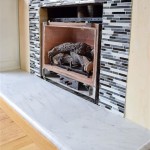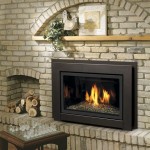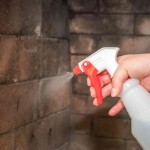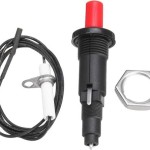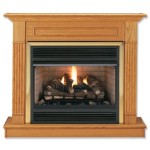Wood Burning Stove Insert For Prefab Fireplace: A Comprehensive Guide
Prefabricated fireplaces, often referred to as "pre-fab" or "zero-clearance" fireplaces, are a common feature in many homes, offering a convenient and relatively inexpensive way to enjoy the ambiance of a fire. However, their efficiency in terms of heat output can be significantly less than that of traditional masonry fireplaces or modern heating appliances. For homeowners seeking to improve the heating capabilities of their pre-fab fireplace, a wood-burning stove insert offers a practical and effective solution. This article provides a detailed examination of wood-burning stove inserts specifically designed for pre-fab fireplaces, covering aspects such as suitability, installation considerations, performance benefits, and important safety guidelines.
A wood-burning stove insert is essentially a self-contained wood stove that is designed to be installed directly into the opening of an existing fireplace. Unlike freestanding wood stoves, inserts are specifically constructed to fit within the confines of the fireplace firebox. When discussing inserts suitable for pre-fab fireplaces, it’s crucial to understand that not all inserts are compatible. Pre-fab fireplaces are built to specific safety standards and clearances, and only inserts that have been tested and listed for use in a particular pre-fab fireplace model can be safely installed. Deviation from these guidelines can lead to hazardous conditions, including fire hazards.
Determining Compatibility and Suitability
The first and most crucial step in considering a wood-burning stove insert for a pre-fab fireplace is to determine compatibility. This involves several key actions. First, the homeowner must identify the precise make and model number of their pre-fab fireplace. This information is typically found on a metal identification plate affixed to the fireplace unit, often located inside the firebox, on the exterior of the facing, or in the owner's manual. Once the make and model are identified, the homeowner (or a qualified installer) must consult the fireplace manufacturer’s specifications or a cross-reference guide provided by insert manufacturers to determine if any specific inserts are approved for use in that particular fireplace model.
Furthermore, even if an insert is listed as compatible, it's imperative to verify that the existing chimney system is also approved for use with that insert. Pre-fab fireplaces typically use a specialized chimney system designed for the specific heat output and draft characteristics of the fireplace. The use of a wood-burning stove insert may alter these characteristics, potentially overloading the chimney or creating insufficient draft, which can lead to smoke spillage and carbon monoxide poisoning. Therefore, the insert manufacturer's instructions will typically specify whether the existing chimney system needs to be relined with a stainless-steel liner of a specific diameter. This liner ensures proper draft and protects the existing chimney from the higher temperatures and corrosive byproducts of wood combustion.
Homeowners should be wary of claims that a universal insert can be used in any pre-fab fireplace. Such claims are generally inaccurate and potentially dangerous. Always prioritize safety and adhere strictly to the manufacturer's specifications for both the fireplace and the insert.
Installation Process and Key Considerations
The installation of a wood-burning stove insert into a pre-fab fireplace is not a do-it-yourself project for most homeowners. It requires specialized knowledge, tools, and adherence to strict safety protocols. It is highly recommended that a certified and experienced installer perform the installation. Improper installation can void warranties, compromise safety, and potentially damage the fireplace and chimney system.
The typical installation process involves several key steps. First, the fireplace and chimney system are thoroughly inspected to ensure they are in good condition and free from obstructions. The firebox may need to be cleaned and prepared to receive the insert. Next, the stainless-steel chimney liner is installed, if required. This involves running the liner from the insert's flue collar all the way to the top of the chimney, ensuring a tight seal at both ends. The liner is typically insulated to improve draft and reduce heat loss.
Once the liner is in place, the insert is carefully positioned inside the fireplace opening. The insert is connected to the chimney liner, and the gap between the insert and the fireplace surround is sealed to prevent air leakage. A decorative surround panel, often called a "trim kit," is then installed to cover the gap and provide a finished appearance. Finally, the entire system is tested to ensure proper draft and combustion.
During the installation process, several key considerations must be addressed. Proper clearances around the insert and the chimney connector pipe must be maintained to prevent overheating of combustible materials. The chimney liner must be adequately supported and secured to prevent it from shifting or collapsing. The insert must be level and stable to ensure proper operation. And the entire installation must comply with all applicable local building codes and regulations.
Performance Benefits and Safety Guidelines
A properly installed wood-burning stove insert can significantly improve the heating efficiency of a pre-fab fireplace. Modern wood-burning inserts are designed to burn wood more cleanly and efficiently than traditional fireplaces, producing more heat with less fuel. This can result in significant cost savings on heating bills, especially in colder climates. Inserts also provide a more controlled and consistent heat output compared to open fireplaces, making them a more comfortable and reliable heating source.
Furthermore, wood-burning stove inserts offer improved safety compared to open fireplaces. The closed combustion chamber prevents sparks and embers from escaping, reducing the risk of fire. The controlled draft and combustion process minimizes the production of smoke and creosote, reducing the risk of chimney fires and carbon monoxide poisoning. Modern inserts also often feature safety features such as automatic shut-off mechanisms and carbon monoxide detectors.
However, it is essential to follow strict safety guidelines when operating a wood-burning stove insert. Only seasoned, dry wood should be used to ensure efficient combustion and minimize creosote buildup. The insert should be operated according to the manufacturer's instructions, and the chimney should be inspected and cleaned regularly by a qualified chimney sweep. Carbon monoxide detectors should be installed in the home and tested regularly. And children and pets should be kept away from the hot surfaces of the insert.
Beyond these key aspects, consider the following for optimal and safe operation:
- Proper Wood Storage: Store firewood outdoors in a dry, covered location. Avoid storing wood inside the house, as it can attract insects and release moisture.
- Airflow Management: Understand and utilize the air controls on the insert to regulate the burn rate and heat output. Over-firing the stove can damage the unit and create a fire hazard.
- Ash Removal: Regularly remove ashes from the firebox to maintain proper airflow. Use a metal container with a tight-fitting lid to dispose of ashes, and keep the container away from combustible materials.
- Regular Inspections: Schedule annual inspections by a qualified chimney sweep to ensure the chimney and insert are in good working order.
By adhering to these guidelines and working with qualified professionals, homeowners can safely and effectively enhance the heating capabilities of their pre-fab fireplace with a wood-burning stove insert.

New Wood Burning Prefab Fireplaces Complete Fireplace Installs

New Wood Burning Prefab Fireplaces Complete Fireplace Installs

Installing Inserts Into Prefab Fireplaces Arlington Tx Black Velvet

Wood Burning Fireplace Inserts Insert Installation

Why Get A Fireplace Insert Wood Gas Inserts In Tn Al

Prefab Linear Fireplaces Expert Fireplace Installation In Your Home

All About Prefabricated Fireplaces Chimney Savers

Conquer Winter With A New Wood Insert Albany Ny Northeastern

Wood Burning Fireplace Inserts Sierra Hearth And Home

Get A New Fireplace Insert In Orangeburg Sc Changeouts


